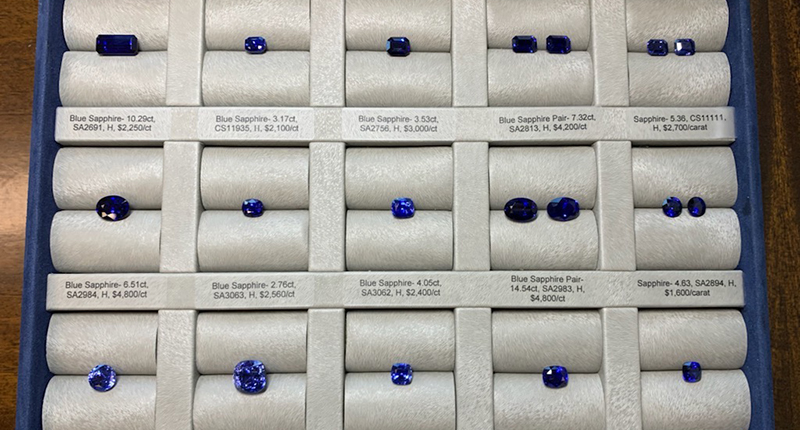The new pink sapphire version of the piece dances with its wearer in the brand’s “Icons After Dark” holiday campaign.
How the Colored Stone Market Is Making Up for No Tucson
Players in the market talk website upgrades, price impacts and bringing that desert feel to clients.

GJX and the Tucson Gem and Mineral Show have been canceled for 2021. AGTA GemFair Tucson also technically is a no-go right now.
As of press time, a handful of gem shows are slated to take place in April, while AGTA and its board are still reviewing their options about the timing and are expected to make a final decision soon.
According to a few wholesalers posting in a gemology forum on Facebook, demand from buyers to attend a spring show is there, driven by the need to restock after a strong holiday season.
But any potential shows must be cleared by local health officials in Tucson, and many of the shows face the added hurdle of being global events. It’s unclear how many people feel safe traveling between countries and would want to deal with what one Bangkok dealer referred to as the “expensive quarantine” that would be necessary to travel and attend a show.
For many, missing out on Tucson comes as a major disappointment—the weeks-long run of events allows ample time for networking, education and discovery, not to mention plenty of good times with colored stone colleagues.
Sad as many are about not making their annual voyage to the desert, some said the biggest loss is the lack of visibility, and missing out on the chance to establish new relationships and the trust needed in the business.
In other areas, like making sales, effects could be mitigated by changes made throughout the past year.
The Digital Sphere
The story of how colored stone companies fared in 2020 seems to mirror the jewelry industry overall—the pandemic wrecked some companies while others finished the year on a strong note.
Overall, it appears market has done OK, given the circumstances.
Gemworld’s Stuart Robertson put it into perspective: “We had a situation where this whole COVID-19 disruption started moving across the world from east to west, so it actually disrupted the supply chain in that same process.
“The long and the short simply is that the U.S. market did OK because there was no abundance of goods that would really drive the competition.”
Trade shows, for example, often offer lower prices due to the sheer quantity of goods around.
That wasn’t the case for most of 2020, Robertson pointed out.
Those who were able to remain active in business through the year realized how scarce goods were and were able to hold on prices, a move supported by the market.
He also said he’s seeing that trading activity is “adequate” for the current rate of demand, especially since the market hasn’t fully reopened yet, so missing out on Tucson isn’t likely to “collapse anybody’s business.”
The colored gemstone market isn’t any different from other sectors of the industry in having to adapt to an online business model. And the market seemed to support this, for the most part; people were willing to buy sight-unseen online at all points in the supply chain.
AGTA Board President Ruben Bindra, president of B&B Fine Gems, said in speaking to several retail and wholesale businesses in the United States, he heard varying results.
Wholesalers saw their business decline anywhere from 20 percent to 50 percent, while many retailers reported having a decent or even good year despite COVID restrictions, especially those offering high-end watches and fine jewelry.
Business was most brisk, it seems, for those who already had a digital presence at the start of the pandemic, or those who saw the writing on the wall and were able to pivot quickly.
“Some companies worked hard and adapted to new methods of marketing using several social media and other web-based platforms,” Bindra said. “Some were slow to adapt and have suffered more loss of revenue.”
That’s not to say it’s easy, by any means.
“The big challenge for our members is to maintain those important connections with suppliers, clients and each other,” said Gary Roskin, executive director of the International Colored Stone Association.
“The colored gemstone trade has relied so much on in-person trade shows, many find it challenging to direct their attention to chasing e-mail, WhatsApp, WeChat, and text messages, while at the same time getting decent images of product onto their website, if they have a website.”
And that’s all before products ship, which is a whole other issue now—getting product to clients to see in person amid mailing systems that, in most countries, have been overwhelmed during the pandemic.
To account for this, gemstone faceter John Dyer has been offering discounts on shipping and a return policy for clients since they aren’t getting to view the stones in person prior.
The pandemic also pushed his company to upgrade its website and overall online presence, a move many have had to make that, Dyer thinks, could help to mitigate the loss of trade shows.
“I think people who are better prepared for the whole non-show sales things will probably do better than the people who are not.”
He added that selling “at a distance” requires a significant investment—in know-how, in technology, and much more.
“It’s just like any new undertaking—there’s a lot to learn about it.”
But during a year like no other, there also arose a greater sense of community—for local businesses and restaurants, and, in the jewelry industry, a feeling that everyone was in it together, supported by loyal customers who weren’t asking for better terms or trying to negotiate prices like they usually might, Robertson said.
Support for small businesses and increased shopping via digital platforms has helped the market get through an up-and-down year and will likely have to keep doing so for a while.
‘Virtual’ Tucson
Since many used 2020 to upgrade their online capabilities, it makes sense they’re using similar channels to bring Tucson to others, so to speak, in 2021.
Around the time the industry would’ve been out in the desert, many dealers and brands promoted their own virtual versions of the gem shows.
The group that calls itself the Ethical Gem Suppliers, which organized Tucson’s first “Ethical Gem Fair” in 2020, hosted a trade-only virtual event from Feb. 10-13, offering the chance for online attendees to see suppliers’ stones, chat with dealers and hear their stories, and more.
For gemstone cutter Dyer, having no physical show meant not only the potential for lost sales but also the lack of opportunity to connect with buyers in a way that’s hard to capture in digital soundbites.
This year, Dyer is doing his own “virtual Tucson” for a few reasons: visibility for him and his products, to drive sales, and to help disseminate more information about gemstones.
It’s not the same content every day—one clip might feature Dyer talking about how he cuts gemstones, while other might include some of the nitty-gritty about his profession that viewers could find interesting.
Other days, Dyer’s virtual streaming show might mirror what he’d normally do in Tucson: go through his inventory and talk about the stones on display.
Omi Gems is also doing “Virtual Tucson” as a way to connect with the colored stone community through calls, texts, Zoom meetings, email campaigns and custom website landing pages featuring “trays” of gemstones to recreate the excitement of Tucson.
“Tucson gem shows are very unique as they are as much about people getting together and sharing a passion for gemstones as much as it is about business,” Omi President and head designer Niveet Nagpal said.
“We are reaching out to clients just to say hello and let them know about new gemstones or pieces we are excited about.”
Looking Ahead
With the remainder of 2021 is up in the air, it could be that Tucson 2022 ends up being the first time during an in-person event that the colored stone market is in full swing, Robertson said.
In the meantime, digital upgrades are making a dynamic gemstone sector even more so, adding new facets to a sector that’s largely operated through traditional means up to now.
An added benefit is online selling can allow for sales to be more evenly distributed throughout the year, instead of spiking around shows and then falling off the cliff for the rest of the year, Dyer noted.
It’s likely many trade members will find a balance with both, and there appears to be plenty of optimism for the colored stone market in the year(s) ahead.
The Latest

A choice that’s generated a lot of commentary, Pantone says “Cloud Dancer” marks a fresh start and encourages relaxation and creativity.

The manufacturer’s holiday campaign features a gift guide filled with trending designs and jewelry that can be personalized.

How Jewelers of America’s 20 Under 40 are leading to ensure a brighter future for the jewelry industry.

The man was charged with theft, accused of ingesting the necklace while in a jewelry store in Auckland, New Zealand.


The Florida independent expanded its store from 8,000 to 14,000 square feet, fulfilling the vision of its late co-founder, Jim Dunn.

Sponsored by De Beers Group

Roseco’s 704-page catalog showcases new lab-grown diamonds, findings, tools & more—available in print or interactive digital editions.

The classic 5600 series G-Shock has been scaled down to about a tenth of its size, becoming a fully functioning watch ring.
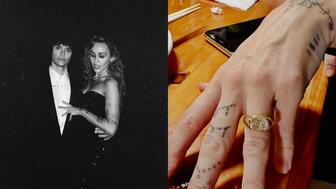
Fellow musician Maxx Morando proposed to the star with a chunky, cushion-cut diamond ring designed by Jacquie Aiche.

The retailer, which sells billions in fine jewelry and watches, is suing the Trump administration and U.S. Customs and Border Patrol.

Black Friday is still the most popular shopping day over the five-day holiday weekend, as per the National Retail Federation’s survey.

The historic egg, crafted for Russia's ruling family prior to the revolution, was the star of Christie’s recent auction of works by Fabergé.
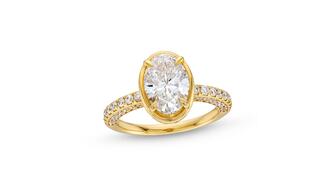
The retailer offered more fashion jewelry priced under $1,000, including lab-grown diamond and men’s jewelry.

The eau de parfum is held in a fluted glass bottle that mirrors the decor of the brand’s atelier, and its cap is a nod to its “Sloan” ring.

Vivek Gadodia and Juan Kemp, who’ve been serving as interim co-CEOs since February, will continue to lead the diamond mining company.

In addition, a slate of new officers and trustees were appointed to the board.
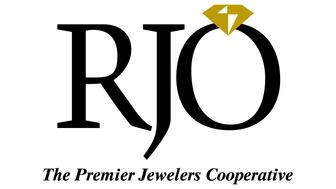
Witt’s Jewelry in Wayne, Nebraska, is the organization’s new milestone member.

Laurs is the editor-in-chief of Gem-A’s The Journal of Gemmology and an expert on the formation of colored gemstone deposits.
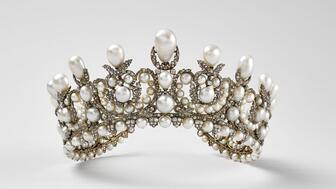
The man, who has a criminal history, is suspected of being the fourth member of the four-man crew that carried out the heist.
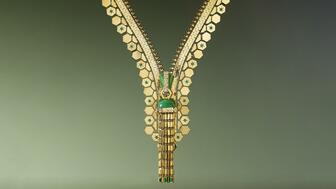
The single-owner collection includes one of the largest offerings of Verdura jewels ever to appear at auction, said Christie’s.

Michael Helfer has taken the reins, bringing together two historic Chicago jewelry names.

The guide features all-new platinum designs for the holiday season by brands like Harwell Godfrey, Ritani, and Suna.

During its Q3 call, CEO Efraim Grinberg discussed the deal to lower tariffs on Swiss-made watches, watch market trends, and more.

Rosior’s high jewelry cocktail ring with orange sapphires and green diamonds is the perfect Thanksgiving accessory.

The “Embrace Your True Colors” campaign features jewels with a vibrant color palette and poetry by Grammy-nominated artist Aja Monet.

Luxury veteran Alejandro Cuellar has stepped into the role at the Italian fine jewelry brand.










